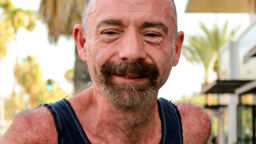
A sixth person appears to have been cured of HIV after receiving a stem cell transplant. However, the so-called “Geneva Patient” appears to be slightly different from other cases. He didn’t receive stem cells from someone with a known genetic mutation that confers HIV immunity.
A tiny number of people have a natural, genetic immunity to HIV.
If someone with HIV needs a stem cell transplant, and they receive the cells from someone with this immunity, they can be functionally cured of HIV. Their immune system is basically rebooted from scratch with the genetic modification included.
This has been observed five times previously. The reason why it’s not rolled out to help more people is simple. Stem cell transplants are risky procedures that require patients to have their entire immune system temporarily eradicated.
Those who undergo them may have to remain on drugs for the rest of their lives to prevent tissue rejection. It’s also hugely expensive. For this reason, it’s only usually people with cancers such as leukemia or sarcoma that undergo the procedure.
Researchers remain interested in the procedure in case it helps point toward a similar, more practical cure for HIV.
What makes this case different is the “Geneva Patient” did not receive a transplant from someone with the “CCR5” gene mutation. That’s the genetic blip that prevents HIV from entering cells.
The patient has now been off antiretroviral treatment for 20 months. He shows no signs of HIV rebounding within his body.
“Wonderful and magical”
The Switzerland-based man is in his early 50s and was diagnosed with HIV in 1990. In a press statement, he said, “What has happened to me is wonderful and magical. We can now focus on the future.”
The full information about the case will be revealed next week at the International AIDS Society Conference on HIV Science (IAS 2023) in Brisbane, Australia. However, ahead of that, Dr Asier Sáez‐Cirión of Institut Pasteur in Paris, outlined what had happened.
“All the markers of HIV infection very quickly decreased until they became undetectable by classic analysis within a few months. To date, 20 months after the treatment interruption, this person has not experienced viral rebound.”
Sáez‐Cirión continued, “All the immunological markers we have analyzed have been unable to detect HIV products, whether it’s the presence of provirus or low-level viral replication or viral RNA.”
The scientists could not rule out some tiny amount of HIV might be hiding in a latent reservoir within the man’s body. However, to date, they can find no trace of it.
It’s unclear yet what ramifications this finding could have. For now, the researchers want to try and determine why and how HIV disappeared within this man’s body. They’re wondering whether other medications he took, including the drugs to prevent rejection, may have shrunk the HIV viral load to a point where it disappeared. That will be among the focus of further investigations.
“This individual will need to be watched closely over the next months to years,” said International AIDS Society Co-Chair Professor Sharon Lewin of the University of Melbourne.
Related*


Timothy Ray Brown, first person cured of HIV, has died of cancer
Partner pays tribute: “I’m heartbroken that my hero is now gone.”


Second person in the world ever to be cured of HIV finally breaks his silence
Until now, Adam Castillejo was simply known as the “London patient.” Now, he’s revealing his identity and says he hopes to be an “ambassador of hope” to others living with HIV.











































prime32
Is this good news?!?! The patient is still required to take a daily drug to stay a life. Am i still missing something. Not to sound ignorant, but is it the stigma of having HIV or AIDS that is the issue.
Chrisk
Yeah, you’re apparently missing basic reading comprehension since you totally missed the part of him being off treatment for almost 2 years.
The stigma is only with you and it has absolutely nothing to do with this article so yes you’re ignorant.
Bromancer7
Yes, being cured of HIV is good news. WTF is wrong with you?
JClark
Wow! Got my morning dose of ugliness from the first two responses to this comment. I wish there were a cure for that! I think the point is that the procedure that “cures” HIV potentially requires the patient to be on anti-rejection medication for the rest of their lives, so the patient is just substituting one drug for another to prevent illness and death. What would be the point other than to avoid the stigma of HIV? It’s a valid argument, but I still think this is very good news if it leads to a more practical cure.
prime32
JClark, Thank you for understanding the logic. Apparently, Chrisk is in their feelings and is missing basic reading comprehension more than me. However, I hope he/she/they have a better day!
Openminded
The article incorrectly states that patients MAY have to be on anti rejection drugs for life. Actually, patients WILL be on these drugs for life. Not having to continue with HIV treatment drugs is good news however due to the fact that 1. You obviously no longer have HIV and it’s threats, and 2. you don’t risk the side effects of HIV meds nor the risk of conflicts between your HIV med and the anti rejection meds. 3. Presumably, you quite possibly beat cancer. I think anyone would be up for a lifetime of a daily drug to kick both cancer and HIV to the curb.
overlarry
That’s great news. The ONE ‘negative’ in all this is that the anti-rejection drugs, as I understand it, make one more susceptible to developing some cancers and certain infections since they ‘tamp down’ the immune system somewhat. Still…. great news and perhaps a prelude to finding another actual “cure” which doesn’t involve stem cell transplants!